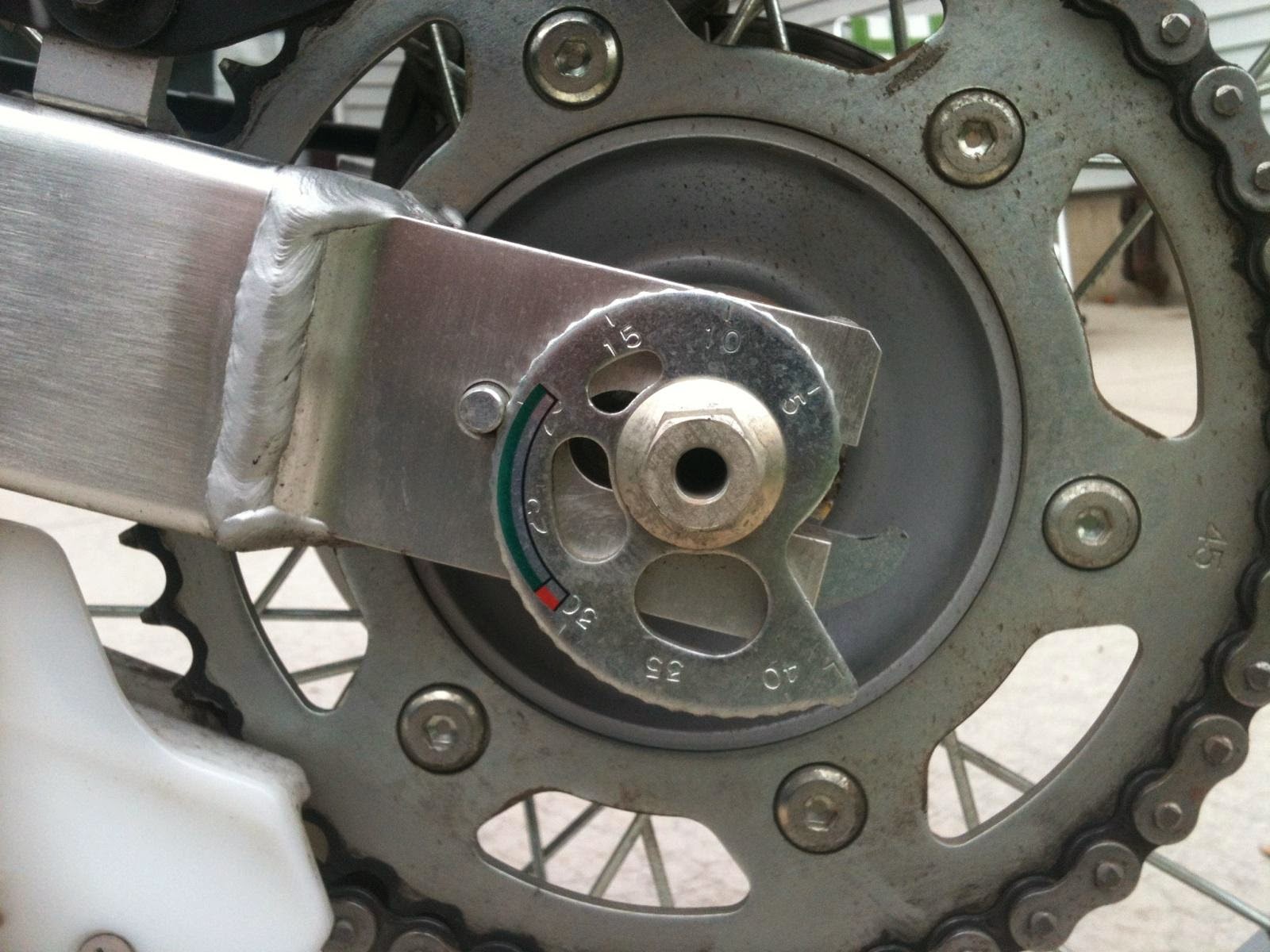The factory-installed sprocket and chain lasted me 13k. Many people on the NC700 Forum were getting about the same more less.I got around 25k miles out of the original chain and sprockets on my NC700X/DCT.
There are many factors when it comes to chain and sprocket wear.
- Lubrication is at the intermediate level, the occasional cleaning is also recommended.
- Proper chain slack and adjustment. - Some bikes are difficult to get done right.
- Rear-wheel alignment during adjustments to line up the sprocket to the centerline of the chain.
I have found these 2 tools that will help with setting the slack properly:
- Motion Pro Chain Tension Tool Slack Setter Pro 08-0674
- BPA-RACING Motorcycle Chain Slack Adjuster Tool - Innovative Chain Tensioning Tool - I have not bought one yet. However, I will here soon.
- Kujunpao Chain Alignment Tool - A "Low Tech" solution that will serve the purpose. I have the laser alignment tool.


